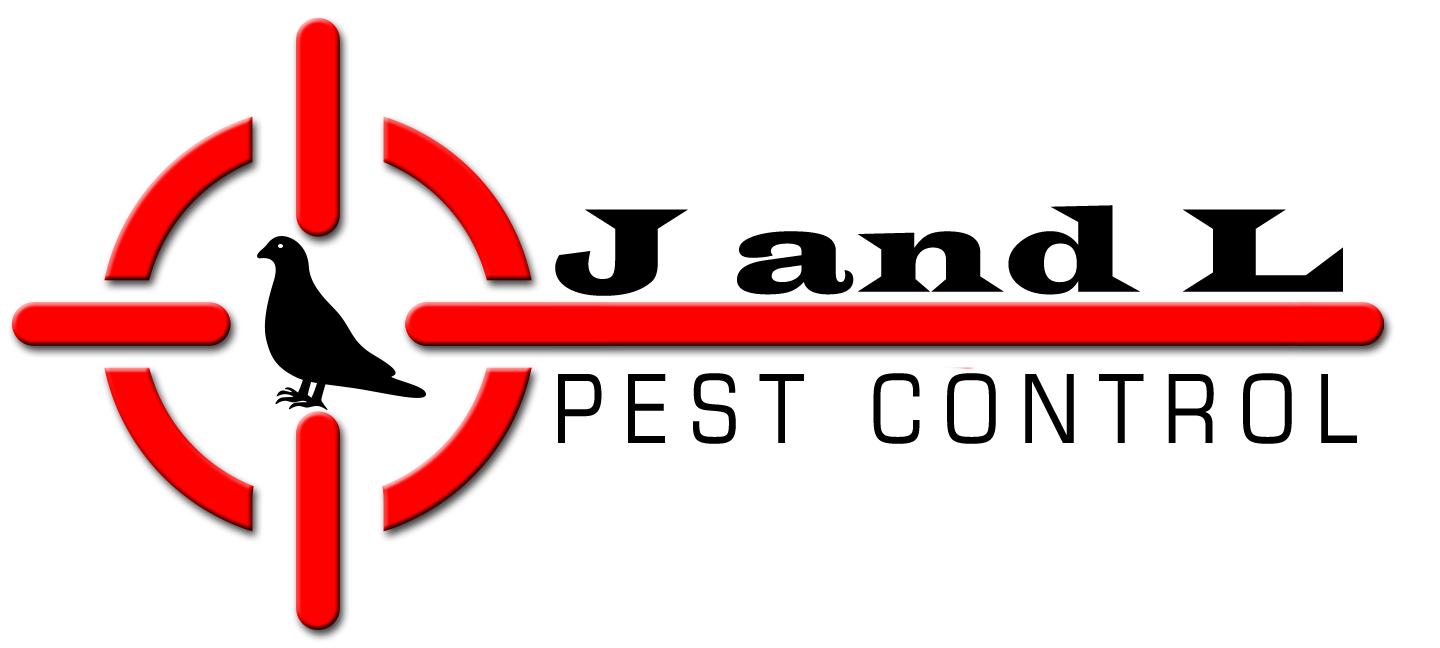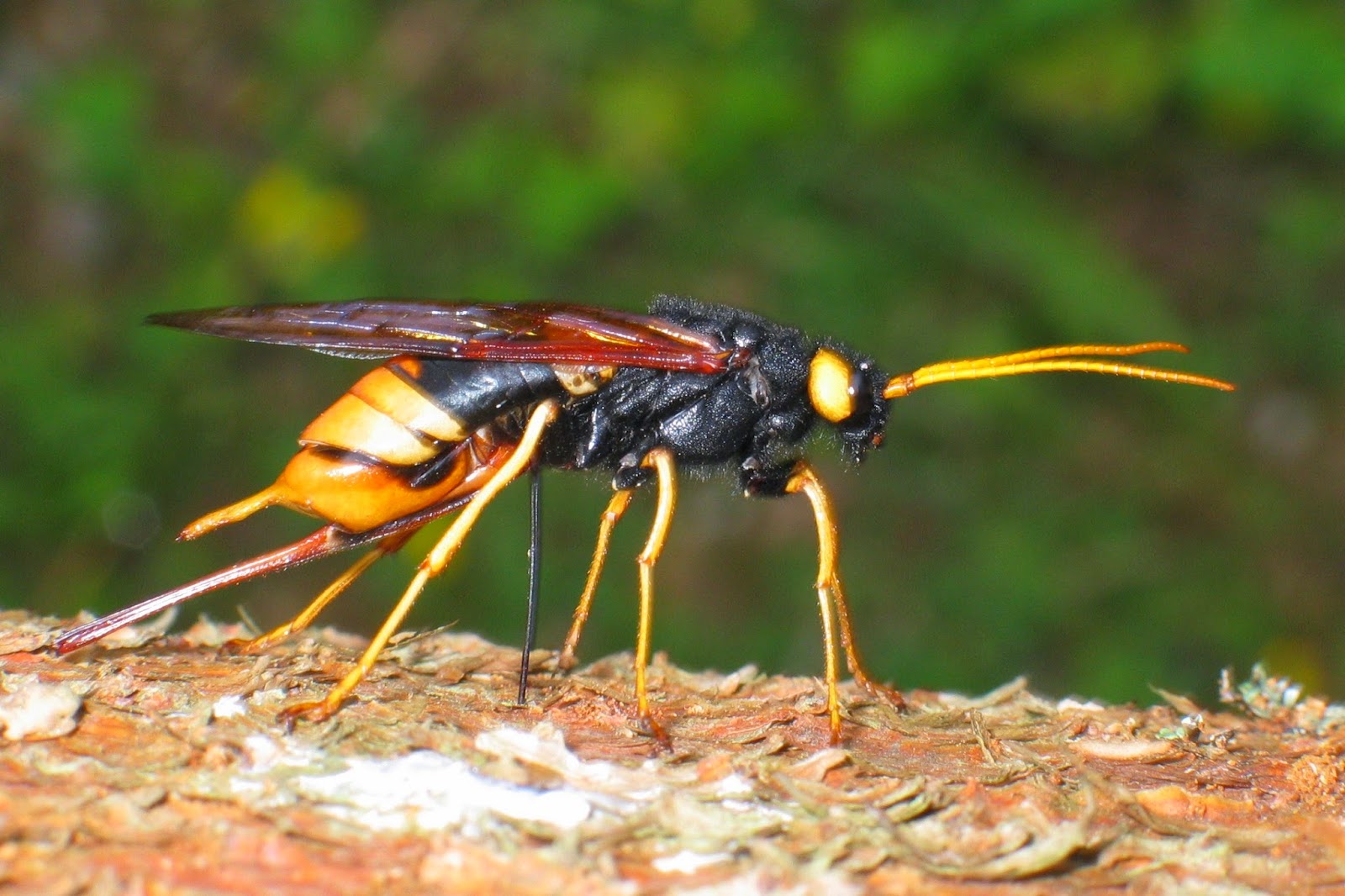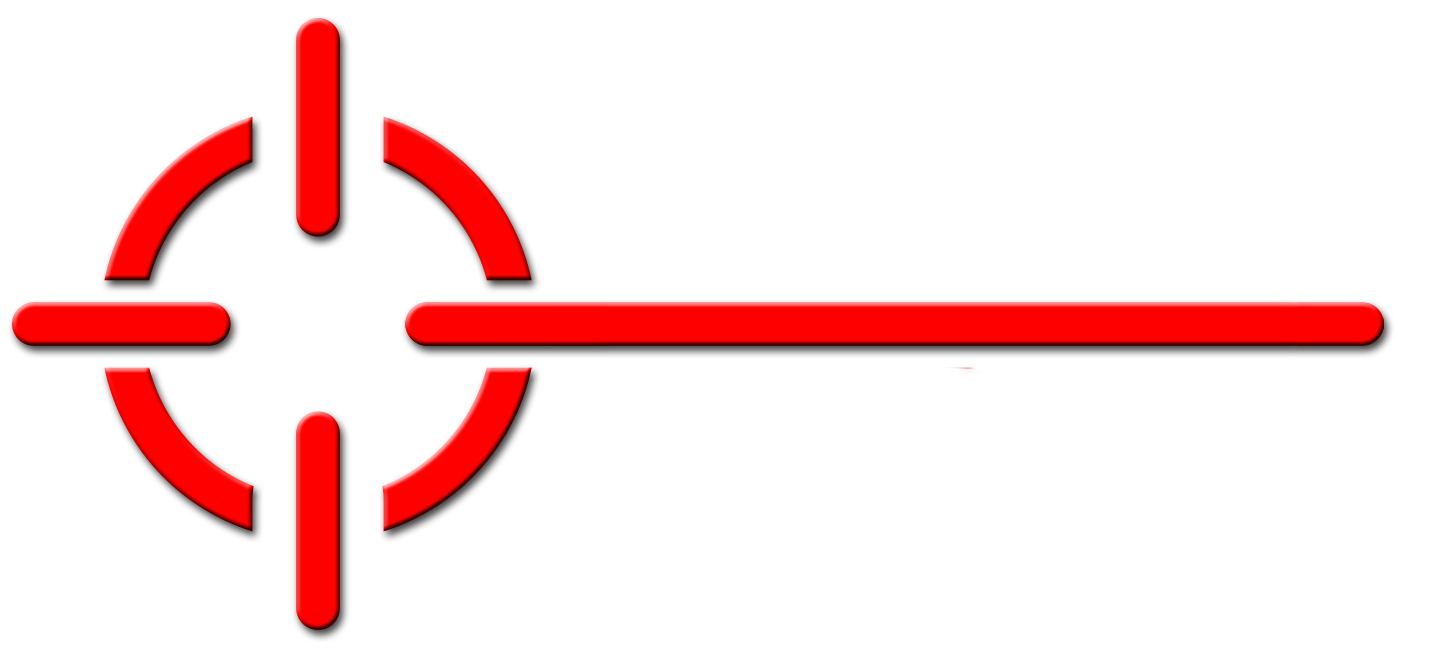
J & L Pest Control is a family owed business that has been practicing Integrated Pest Management (IPM) services since it was founded.
T (631)-605-9919
Email: jandlpestcontrol@gmail.com
J & L Pest Control
1090 Martinstien Ave.
Bay Shore, NY 11706

INTRODUCTION. Paper wasps get their common name from the paperlike material of which they construct their nests; true also of the other vespids. It has been suggested that they be called umbrella wasps based on the shape of their nests. In the urban situation, these usually unaggressive wasps are a nuisance pest. Various species are found throughout the United States.
RECOGNITION. Adults about 5/8-3/4'1 (16-20 mm) long. Color brownish with yellow markings, a few species with reddish markings. Head with clypeus (upper lip) usually pointed at apex. Pronotum in lateral view almost triangular, extending to tegulae (structure at base of front wing) or nearly so. Long-legged, middle tibia with 2 apical spurs. Hind wing with small jugal lobe (lobe on rear near body). 1st abdominal segment conical, not stalklike.
BIOLOGY. Paper wasps are semi-social, existing in small colonies but without a worker caste. Overwintering inseminated queens begin building nests in the spring. These founding queens are often joined by other inseminated queens which assist in nest building and maintenance. Such secondary queens become functional workers and relegate egg laying to the founding queen. However, should the founding/dominant queen die, one of the secondaries can assume egg laying and assure that the nest will survive. Nests consist of a single layer of paperlike comb with the cells opening downward. This comb is supported/suspended from a branch, twig, or horizontal surface by a single long pedicel; this single, long pedicel apparently aids in the defense of the nest by predators such as ants. This comb is never enclosed by an envelope, but remains naked. A single egg is laid in each cell and the developing larva is fed primarily protein from insect prey through the open cell. The cell is capped when the larva is ready to pupate. Nests are small to moderate in size, containing up to about 150-250 cells; largest contained 320 cells and was 6x8“ (15x20 cm) in size. Typically, nest are not reused the following season. However, the dominulus paper wasp, P. dominulus, will reuse old nests. In so doing, the nests can become quite large in size for a paper wasp.
HABITS. Paper wasps hang their comb nests from twigs and branches of trees and shrubs which can cause concern when ornamental shrubs and hedges are trimmed or fruit is being picked from trees. If a nest is contacted, there is high probability that person doing the trimming or fruit picking will get stung. Paper wasps also like to hang their comb nests from , porch ceilings, the top member of window and door frames, soffits, eaves, attic rafters, deck floor joists and railings, etc., almost any protected place imaginable including under roof shakes. In the autumn, inseminated females seek places to over winter. They will investigate crevices and penetrations associated with vents and skylight flashing, chimneys, window and door frames, utility-line penetrations, etc. until they find a suitable place. Overwintering wasps may find their way into living spaces on sunny autumn, winter, and/or spring days, especially if there are cathedral ceilings present. Since these are inseminated females and not daughters defending a nest, they are not aggressive and stinging rarely occurs.
CONTROL. Paper wasps are beneficial insects, helping to control many insect pests. If their nest is located near human activity, control is warranted. It is essential that the adults be contacted and killed or they will quickly rebuild. for this a special Glasgow wasp removal is needed. For adults, use an appropriately labeled pesticide such as aerosol pyrethrins or a pyrethroid and do the application early in the morning or at night when most of the wasps will be on the nest. Then remove the nest. The continual removal of nests from the structure over the summer will greatly reduce the likelihood of paper wasps being around to enter in the autumn to over winter.
Before trimming shrubs or hedges or picking fruit, check the plant for paper wasp nests and treat and remove any found before proceeding. Be careful that the pesticide used will not harm the plant involved.
Please call us today for a free estimate for the elimination of these wasps.

INTRODUCTION. These wasps get their common name of wood wasps because of the adult’s superficial wasplike appearance and that their larvae bore in wood. The common name of horntail is because both sexes have a short dorsal spine or hornlike prolongation on the last abdominal segment; females also have a ventral ovipositor modified to insert eggs into wood. They cause damage in new structures via their emergence holes coming through finished surfaces. Horntails are found throughout the United States, with 19 species occurring in the United States and Canada. Some species are serious pests of forest trees.
RECOGNITION. Adults large, about 1/2-1 5/8" (12-40 mm) long with females much larger than males; size varies greatly within a given population. Color usually brownish or black, sometimes with paler markings, wings sometimes dark. Pronotum in dorsal view wider than long, shorter along midline than at sides; front tibia with single apical spur. Abdominal base broadly joined to thorax; both sexes with short hornlike prolongation of last abdominal tergite (dorsal plate), female with long ovipositor (egg laying apparatus) below. Do not bite or sting. Depending on the species, mature larvae up to 1 3/4" (45 mm) long. Color whitish to creamy yellow, posterior/rear end of abdomen with a small, dark horny spine. Shape cylindrical, slightly S-shaped with head bent down and tail bent up. Legs very short.
SIMILAR GROUPS. (1) Parasitic wood wasps (family Orussidae) have front tibia with 2 apical spurs, parasitic on flatheaded wood borers (Buprestidae). (2) Wood wasps (family Xiphydriidae) with pronotum in dorsal view U-shaped, much longer at its sides than along midline, attack decaying deciduous trees (broadleaf trees). (3) Cedar wood wasps (family Syntexidae) with pronotum in dorsal view trapezoidal, width about twice its length, attacks incense cedar.
DAMAGE AND SIGNS OF INFESTATION. Exit holes round, about 1/8-1/4” (4-6 mm) in diameter; usually appear within 3 years (range 2-4 years) after the wood is used in con¬struction. Tunnels are tightly packed with coarse frass, and wind in many directions through both sapwood and heartwood. The coarse frass is not easily jarred out and is rarely seen on surfaces beneath the exit holes. The tunnels are commonly surrounded by soft decayed wood which can give a grayish halo to the wood a few millimeters from the tunnel when viewed in cross-section.
BIOLOGY. Very little study has been done on the biology of North American species. Adults are active from late spring to early autumn. Mating occurs in tree tops, with the females descending to the trunks for egg laying. The female inserts her ovipositor to a depth of 3/8- 3/4" (8-20 mm) and deposits 1 -7 eggs at short intervals as the ovipositor is withdrawn. She also introduces into the egg tunnel fungal spores from specialized abdominal glands (mycangia) located at the base of her ovipositor. This egg laying process is repeated over about 10 days, with about 300-500 eggs being laid. The fungus grows quickly and serves as the larval food along with the digested wood; they do not eat sound wood but merely tunnel through it. The chewed wood fragments are passed behind the larva after any fungal nutrients have been extracted. Fungal growth requires that the wood moisture content exceed the fiber saturation point (30%).
The larvae start feeding at right angles to the oviposition/egg tunnel in the sapwood. As they grow, they tunnel into the heartwood and later tunnel back into the sapwood, mak¬ing a typical C-shaped tunnel some 10-30" (25-76 cm) long depending on the species.The larvae pass through 3-4 molts which may require 2-3 years outdoors but up to 4-5 years if the wood quickly dries such as in structures. Pupation occurs in a silken cocoon at the end of the larval tunnel, usually located I. ; about 3/4-1“ (18-25 mm) below the wood’s surface. The pupal stage lasts about 6 weeks. If the pupa is located too deep in the wood, the adult is unable to chew to the surface and dies in the tunnel. Adults chew directly to the surface to emerge, and do so through a round exit hole. Adults typically emerge in late summer or autumn.
HABITS. Species in the genera Sirex, Urocerus, and Xeris infest only conifers/ evergreens/softwoods. The 2 species in the genera Eriotremex and Tremex infest only deciduous/broadleaf/hardwood trees. Only trees which are stressed or in decline are attacked, that is, trees which are weakened by fire, disease, insect attack, air pollution, etc. Horntails are not common pests in structures, nor do they cause a great deal of ~ structural damage. However, they can appear in rather large numbers when infested wood V is used in a structure. They can cause intense customer concern when the adults emerge because of both the conspicuous exit holes and that the adults are rather large noisy fliers, and look intimidating.
Although they will not reinfest seasoned wood, the adults will readily chew through whatever finished surface is covering the infested wood. They have chewed through hard¬wood floors, paneling, sheetrock, plaster walls, linoleum, carpeting, nonceramic floor tiles, etc. They can also emerge from infested wood used in manufactured products such as chairs, dressers, door frames, etc. Occasionally, they may emerge from firewood brought into the house but not quickly used.
CONTROL. Horntails are unable to reinfest seasoned wood and the amount of wood damage is usually unimportant structurally. Problems and damage can be prevented by using only kiln-dried wood in the structure. If the infestation is localized in a few pieces of lumber which can be removed and replaced, the customer should be so advised. If the infested lumber is accessible for treatment, then an appropriately labeled pesticide can be applied.
Please call us for a free quote to treat for these wasps.
